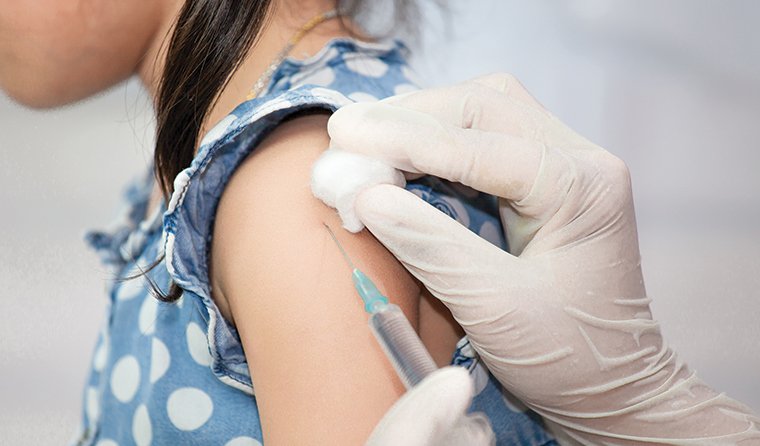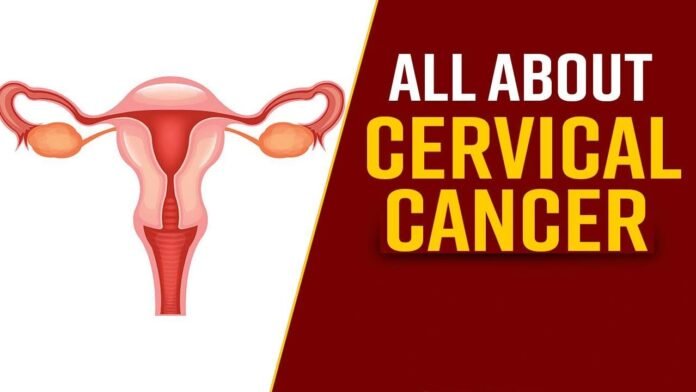Introduction
HPV vaccine India has become an affordable solution for reducing cervical cancer cases. Specifically, questions related to science and technology in the context of HPV vaccination have been rapidly increasing.
In response, the government has recently decided to roll out an immunization program to reduce cervical cancer cases. This program involves the administration of injections or vaccination against the human papillomavirus (HPV).
It aims to start an immunization program against HPV, targeting cervical cancer cases. But before we delve into the details, let’s understand what cervical cancer is.
What is Cervical Cancer?

Cervical cancer is often confused with cervical, but it is actually a cancer that starts in the cells of the cervix. The cervix is a female anatomy that connects the vagina and the uterus.
When cervical cancer starts developing, it starts to impact this particular region. This region is impacted by cervical cancer, and it is an increasing problem in India.
This is because 20% of cervical cancer cases worldwide are linked with India. 1/5th of cervical cancer cases all over the world are from India. Along with this, India reports around 1.25 lakh cases and about 75,000 deaths each year caused by cervical cancer.
It burdens India with this disease. Therefore, the government has decided to implement an immunization program to combat this disease.
The HPV Vaccine and its Target

The HPV vaccine plays an important role in preventing the development of cervical cancer. It aims to prevent cervical cancer by targeting HPV infections.
HPV (Human Papillomavirus) infection is the starting point for cervical cancer. Gradually, over a period of time, it transforms into cancer. By vaccinating against HPV, we can prevent infections and, as a result, prevent deaths and provide relief from this disease burden.
The government has developed a quadrivalent vaccine that targets four types of HPV. HPV 16 and 18 are known to create tumors, and they are responsible for 70% of all cervical cancer cases.
This quadrivalent vaccine also prevents genital warts caused by HPV. The vaccine that will be used in the government campaign is called “Sarvak” and has been developed by the Serum Institute of India.
It is the Indian indigenous vaccine and will be available at a lower price point. Now, let’s address some important points about the vaccination program.
The Vaccination Program
Under this immunization campaign, girls aged 9 to 14 will be given this vaccination. It will be provided free of cost, and it will be administered in three phases over the next three years. This is an important point to note – the vaccine will be administered in three phases.
After achieving this, the government’s objective in the next three years is to provide this vaccination to all girls in this age bracket. Following that, the government plans to introduce the HPV vaccine into routine immunization programs, which will be given to children above 9 years of age.
This is how we are targeting HPV and HPV’s responsibility in cervical cancer. By doing this, we are targeting cervical cancer cases and reducing the incidence of other types of cancers, such as the one developed in anus, oropharynx, or genital warts.
Effectiveness of the Vaccine
This vaccine has an effectiveness rate of 97% in preventing cervical cancer. More than 100 countries have already implemented it. So, it’s clear that vaccination is the need of the hour, and India should work on implementing this vaccination program. Now, let’s discuss how we can get the vaccine and who can get it.
Who Can Get Vaccinated?
Girls aged 9 to 14 must receive this vaccination before becoming sexually active in order to prevent the chances of cervical cancer. It is important to note that being sexually active does not mean having menstrual cycles from a young age.
There’s a distinct difference between hitting puberty and becoming sexually active. When a girl is at a particular age where she is ready to have sexual intercourse with any partner, then she is sexually active. In such cases, it is essential to receive this vaccine before sexual intercourse.
Here comes an important question: Can boys also get vaccinated? The answer is yes. Boys can also be administered this vaccine, and it is strongly suggested for boys who are sexually active or show a high tendency to have intercourse with men.
So, experts and doctors recommend that boys get vaccinated with this particular vaccine.
Pap Smear Test
In addition to vaccination, there is another test called the Pap smear test. This test observes cervical and cervical cell changes and helps detect cancer and other abnormal cervical tissues. Alongside this, an HPV DNA test is also conducted, which identifies whether HPV has already entered the body and which type it is. So, if a woman’s HPV DNA test shows that she has not yet been exposed to HPV infection, then it means that she does not have a high chance of developing cervical cancer. This is all about it.
Highlights
- The government aims to reduce the burden of cervical cancer by introducing an immunization program targeting the human papillomavirus (HPV).
- The vaccine will be given to girls aged 9 to 14 free of cost in an effort to prevent cervical cancer.
- The vaccine is designed to target HPV types 16 and 18, which are responsible for a majority of cervical cancer cases.
- Adolescent girls who are already sexually active are advised to receive the vaccine to protect against HPV infections and cervical cancer.
- The vaccine may also be administered to boys and older women, with Pap smear tests recommended for detection of cervical cell changes and cancer.




